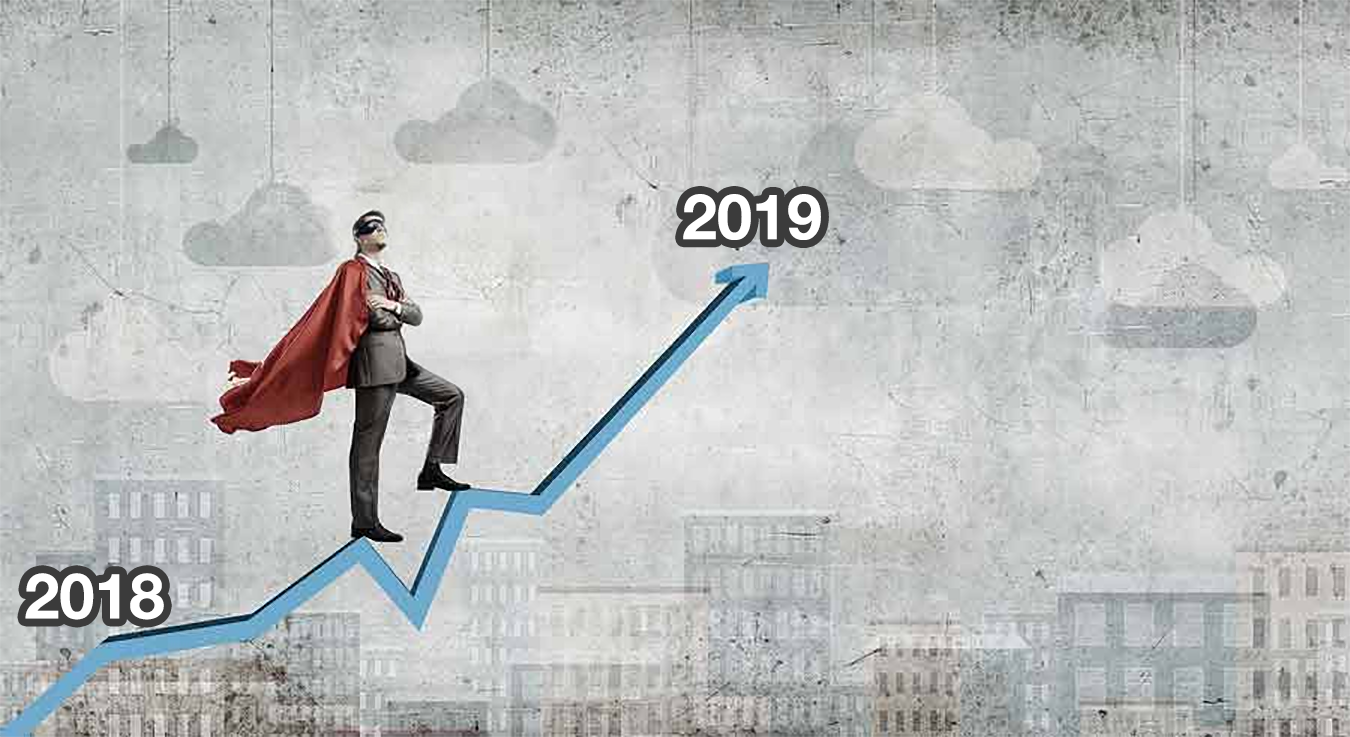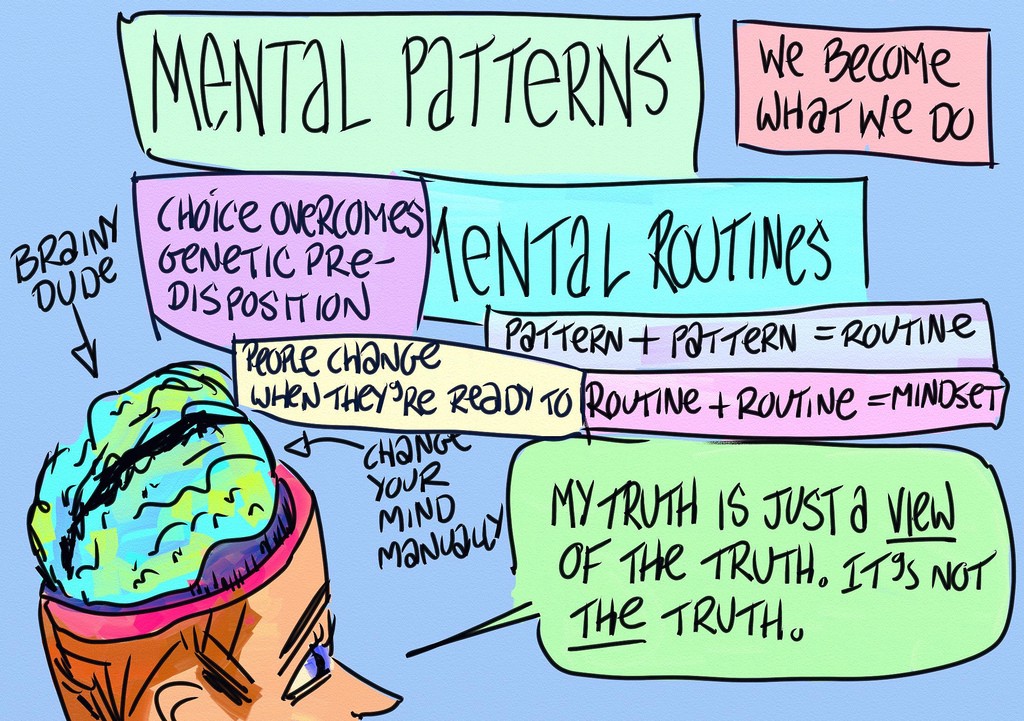Cover Image adapted from: www.cfocentre.com.au
Strategies on how to be more self-aware and plan a good year
How was 2018 for you?
Did it go “according to plan”?
Was there even a plan?
If I have thrived more than I ever have in 2018, it’s not because I was lucky, it’s because I was deliberate in my actions and desire to improve everything about myself.
How deliberate were you in your actions in 2018?
If you knew me 14 months ago, you would know a completely different person. I was a shy introvert who had a hard time connecting with people.
I’m telling you that because, I’ve been chatting with many people over the past 12 months who tell me that they feel stuck (usually not that clearly), and I felt the same way before.
Do you feel stuck?
Do you feel that there’s something holding you back?
Deep down, do you feel that you can do better?
I managed to get rid of my limiting beliefs this year. If you read some of my previous articles, you know I like to end all my articles with “You can do this”, because the truth is, you really can. Screw “I can’t”!
However, no one — not a single person — can commit to a resolution for 365 days. Given that, my resolution last year was an unusual one:
Fail as much as I can.
I guess I managed to keep that one! I knew someone back in Spain who’s resolution was to drink more beer. She probably made it too.
My resolution was far from pessimistic though. Think of it more of: “I’m going to experiment on many aspects of my life”. Given the nature of experimentation, you will undoubtfully “fail”. That’s the point. Learn from experience.
It was, ultimately, the highest level of positive mindset I could be in.
“I have not failed, I’ve just found 10,000 ways that won’t work.” — Thomas A. Edison
In the following sections, we’re going to look into how we can make 2019 a year where we thrive more than we’ve ever thrived. It’s an action plan you’ll have to work on, but will yield incredible results if you stick to it.
But most importantly, you will be the creator of that plan because no one else knows you better than yourself.
Think of the following as a list of suggestion you can experiment with. Pick and choose what you think is going to work for you.
Now, grab pen & paper, a note-taking app or a word processor.
Are you ready?
Step 1. Recall as much as you can about 2018
One of the most impactful things I learned to do back in January 2018 was journaling. I thought it would be a dumb exercise and I couldn’t have been more wrong. I’ve never had so much clarity in my entire life.
If you are used to journaling, this exercise will be simpler for you. Nonetheless, start at 1.1:
1.1. Recall all your ups and downs. Don’t think about when they happened yet. Don’t refer to notes you’ve taken.
Close your eyes and try to recall all the good and the bad things that happened to you this year. Try to go as deep as you can.
Write everything down.
Visualize it as vividly as possible. A lot of times, the context in which something happened is very valuable information. Answer these questions for each thing:
What is it?
Was it good? Was it bad?
Where were you?
How did I feel?
Were there any people involved? Did they help? Did they make things worse? Why?
Why these questions?
Multiples reasons. These help you with self-awareness, gratitude, critical thinking and more. These three are very important aspects of thriving.
1.2. Compare what you recalled with what you recorded
Our brain forgets. It’s just how we’re made. I like this exercise because this re-aligns what you think of yourself vs the “reality”.
What you can recall vs notes you took
You can be thorough or you can do a quick scan.
To help you recall, look at your old emails, notebooks, journals, Git commits, Trello, your calendar, previous articles you wrote, etc.
I looked at my old journal from January-June a few days ago and I actually learned much about myself. Some things I didn’t accomplish when I said I would, I accomplished a few months later. Some things I completely ignored. Some things I believed in, I don’t necessarily believe in anymore.
It’s nice to see that evolution, good or bad. Actually, it’s not just nice, but invaluable in learning who you really are.
After all, you are whatever people say you are.
Aligning your self-perception with your actions will help you thrive in 2019 and beyond.
Step 2. Start reflecting on 2019
As you know from before, I don’t really believe in new year resolutions. Or at least not the “artificial” ones. I like bigger picture ideas. I like to answer:
Why do I do what I do?
It is the hardest question of all.
Back in December 2017/January 2018, I didn’t have a clear answer. Unsurprisingly, I set out to experiment in 2018. I figured it out in June: I want to help people thrive in this century.
My “how” may change frequently, but my “why” remains.
But it’s more than a resolution, it’s a life mission. Or a year mission if you want.
2.1. Reflect on each of the bad things you noted above
What could have been improved, in hindsight? A lot of things are surprisingly in our control once we stop blaming someone or something else.
This exercise is probably the most important one for your self-awareness, so please take it seriously.
Take note of :
the mindset changes that need to happen;
the skills that you need to learn;
the habits that you need to change;
the connections you need to make or break; and
anything else you can think of.
2.2 Reflect on each of the good things you noted above
How do you go from good to great?
Note that there’s nothing wrong with remaining good in many of the things we do. I’m a prime example of that, by having learned 42 skills in the last year alone. Most of these skills, I’m good at them, and I’m perfectly fine with my imperfection.
But it never hurts to imagine the “what if”.
With most of the things I do, I try to see how I can bring it to the next level. Most people don’t. What’s good about doing that is that you open yourself up to imagining what you’re capable of as well as figure out your priorities.
The reflection, it turns out, is the same as above. Take note of :
the mindset changes that need to happen;
the skills that you need to learn;
the habits that you need to change;
the connections you need to make or break; and
anything else you can think of.
2.3 Identify patterns
Photo Credit: www.flickr.com
Can you find out, from the previous reflection, similarities in what you need to do? Think “two birds, one stone”.
For example, if I stop this habit, I’ll be healthier, I’ll be a better husband/wife/parent/friend, I’ll have more time, etc.
Most of the time, you can do minimal actions to get most of the results. Are you familiar with the Pareto Principle, or the 80/20 rule? Michael Simmons does an excellent job of explaining all the different aspects of it.
The idea is that you can do 20% of the actions that lead to 80% of the results. I apply this rule to almost everything I can think of.
2.4. Maximize improvements
Image adapted from: interaction-design.org
Now that you’re aware of every area of improvement in your life and what the patterns are, it’s time to go through all of them and brainstorm what are the 20% of the actions that will lead to 80% of the results.
Here are common 80/20 patterns you are aware of but neglect anyway:
Eating better food
Being physically active
Being grateful and positive
Being mentally healthy
and more
I want you to UNDERSTAND them, not just be aware of them. The things you noted that you need to improve, the above patterns are very likely to help with dramatically.
But outside of that, create your own patterns and define the percentages.
Define what 80% of the results mean for you. You defined what you stand for at the beginning of this step, what’s 80% of the results towards that?
Of the patterns you identified, which 20% contribute to that?
Step 3. Craft a rough plan
Nothing is ever set in stone. In fact, being adaptable is a skill I considered the second most important skill of all to thrive in 2019. So whenever things don’t go according to plan, find ways to adapt.
That being said, having a sense of the direction is an incredible motivator to action. What constitutes a good plan? Actions and Milestones!
I can almost feel your excitement right now!
A milestone is an expected result to be achieved at a certain date (and time) (my own definition).
An action is, well, something you do.
Hey, I know it doesn’t sound that exciting, but all highly motivated people do it, so maybe it’s a pattern? Right, let’s get to it.
You’ve already defined your actions and your results, so all that’s left to do is put them on a calendar. When are you going to do something, and when is the deadline on the result?
Be specific and realistic.
Image Source: www.process.st
You won’t be doing 20 actions in one day. Space it out. Whatever you think you can do in one week, divide it by half. We’re all unrealistic about our ability to do many things in a short timeframe.
The same applies to deadlines. Whatever result you think you can accomplish in a given timeframe, double it. If you think you can achieve something in a month, make it two months.
If you think you have a track record of meeting your own deadlines and you thrive on hard challenges, by all means, keep your estimates. I work like that too, but I found that most people don’t.
Examples:
I will have lost 3% body by February 28th.
I will have made $100,000 by April 1st.
I will be a better <husband/wife/parent/friend> for <insert name here> by January 31st.
I will have started <insert project name here> by April 30th.
Etc.
Don’t forget to put those in a calendar you refer to frequently!
Also, notice how I worded them? “I will”. It’s definitive! Simply doing that actually improves your belief that you will achieve it.
Conclusion
I hope this helps you gain some awareness and helps you craft a solid plan (even though rough) to make 2019 your best year yet.
I made sure to not tell you exactly what to write because it’s really a personal exercise. Self-awareness is the only true way to get better.
He who doesn’t know doesn’t change.
You can do this!
If you want to be prepared for a better tomorrow, then SkillUp! Check out SkillUp Academy!









